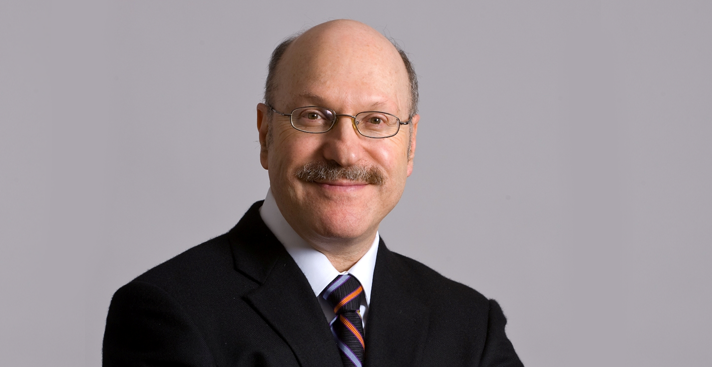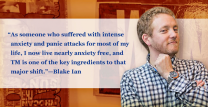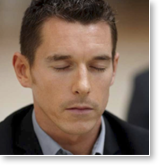Ever wonder what it would be like to work in a place where everyone was extremely focused, creative, and productive—and not stressed out?
In the Huffington Post article below, Dr. Norman Rosenthal discusses how our society can achieve this kind of happy, energetic, creative business environment. Dr. Rosenthal is a world-renowned psychiatrist, researcher and best-selling author who first described seasonal affective disorder (SAD) and pioneered the use of light therapy as a treatment during his twenty years at the National Institute of Mental Health. He’s written or co-authored over 200 scholarly articles and eight popular books, and has been listed as one of the Best Doctors in America and as one of the country’s top psychiatrists.
As I browsed the offerings in an airport bookstore recently, I was astonished at the number of titles geared to improving business performance: how to become a better leader, a better manager, a better innovator — ten tips for this, eight strategies for that and seven methods for improving … whatever needed improvement. Without going into all the specifics that these books contained — which would have taken many days of uninterrupted reading, and I had only fifteen minutes to get to the departure gate — it occurred to me that one method, perhaps the most important, was being overlooked or, at the very least, deemphasized so as to be lost in the maelstrom of advice. I am referring, of course, to meditation.
Whatever advice or techniques we choose to implement to boost creativity and performance all have to pass through a central processing unit called the brain. Now we like to subscribe to a myth — those of us who are called upon to perform at high levels day in and day out, to make crucial decisions that affect large numbers of people, and to develop creative and innovative strategies — the myth that our brains can function at peak levels at all times. That simply isn’t true.
We’re not designed to live on adrenaline
Psychologists have documented variability in alertness and mental acuity across the day. Our personal experience confirms this. We dash for that extra espresso drink or diet soda so as to keep going, or settle our nerves down with a beer or cocktail at the end of the day. Aside from using these exogenous chemicals to regulate our state of mind, when stressed we release endogenous brain neurotransmitters, such as norepinephrine and dopamine, to help keep us sharp.
But these chemical systems have developed through the course of evolution for short-term crises and challenges, not as part of an ongoing lifestyle. We are not geared to “live on adrenaline.” In fact, the biggest cause of long-term sick leave, work stress, has been called the “The Black Death of the 21st Century.”
Creativity and peak performance
Leaving aside the enormous toll that stress takes on physical well-being, let’s consider its impact on creativity and innovation. It stands to reason that having to grind away at facts and figures to meet stringent deadlines is hardly a formula for success at the highest level. Peak performance requires peak experiences, which occur routinely among people who practice Transcendental Meditation.
According to Ray Dalio, longstanding TMer and founder of Bridgewater, the biggest hedge fund in the world, “Meditation helped my creativity. I find that creative ideas don’t come from working hard at them in one’s conscious state. Instead, they come when I’m very relaxed. They pass through my brain and I grab them.”
Creative insights occurring in altered states of consciousness are, of course, the stuff of legend. Think of Archimedes, relaxed in the bathtub, realizing how he can establish whether the king’s crown was made of solid gold. Or of Kekulé, dreaming of snakes biting one another’s tails — prompting the insight that the carbon atoms in the benzene molecule must be arrayed in the shape of a ring. So it is that longstanding TMers regularly report creative insights occurring during transcendent experiences — though admittedly, few have the same historical significance as these great historical discoveries.
But the greatest value of TM in boosting creativity and performance comes not from the sporadic flashes of insight that occur during meditation sessions. Rather, as people meditate regularly, twice a day, the transcendent shifts in consciousness move from the meditative sessions into their daily lives. A sense of calm effectiveness enters the stressed mind, and slows down thoughts and physical responses in a way that leads to more efficient processing and innovative — even unexpected — solutions.
Brain wave coherence and the “ninja” state of mind
Such shifts of consciousness are accompanied by changes in electrical brain wave patterns — increased “brain coherence,” a function that compares how different regions of the brain exhibit the same brain frequencies over time. In one study of Norwegian businessmen, increased brain coherence was associated with greater levels of accomplishment and organizational responsibility To quote Dalio again, TM has helped him feel “in a calm, clear-headed state so that when challenges come at you, you can deal with them like a ninja — in a calm thoughtful way. When you’re centered, your emotions are not hijacking you.”
Even after meditating for years, studying the many peer-reviewed articles that show physical and mental benefits for TM, and writing a book on the subject (Transcendence), I am still astonished that this ancient technique can do many things that elude even our most sophisticated drugs. It has often occurred to me that if TM could be put into a capsule and marketed like a pharmaceutical, it would be a billion dollar blockbuster.
————————————
This post is part of a series produced by The Huffington Post and the David Lynch Foundation (DLF), a nonprofit organization that brings Transcendental Meditation to at-risk communities. On Feb. 11, DLF will host Meditation, Creativity, Performance and Stress, a panel discussion led by Andrew Ross Sorkin featuring Ray Dalio, Dr. Mehmet Oz and Mario Batali. For tickets and information, click here.










